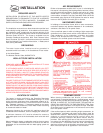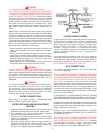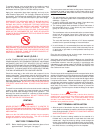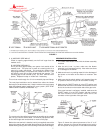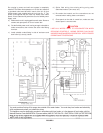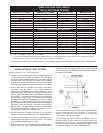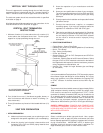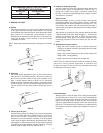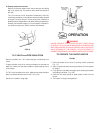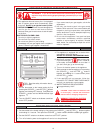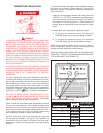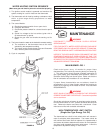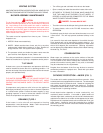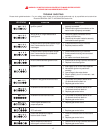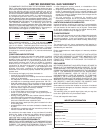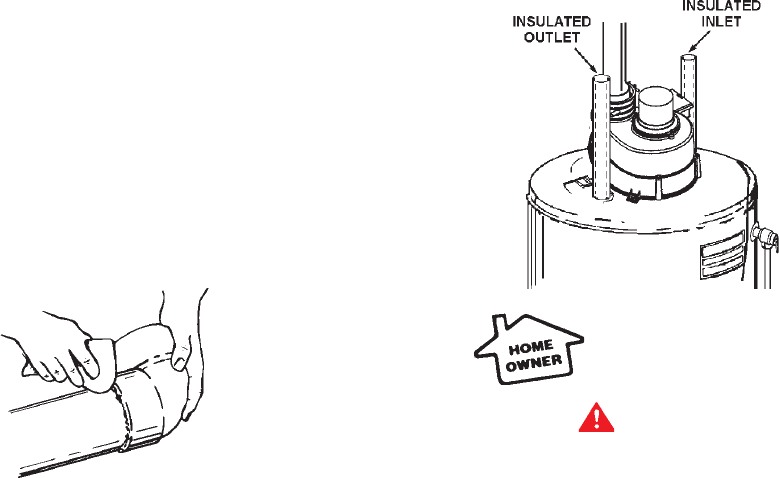
12
G. Cleanup and joint movement
Remove all excess cement from around the pipe and fitting
with a dry cotton rag. This must be done while the cement is
still soft.
The joint should not be disturbed immediately after the
cementing procedure, and sufficient time should be allowed
for proper curing of the joint. Exact drying time is difficult to
predict because it depends on variables such as temperature,
humidity and cement integrity. For more specific information,
you should contact your solvent cement manufacturer.
STEP G
T & P VALVE and PIPE INSULATION
Remove insulation for T & P Valve and pipe connections from
carton.
Fit pipe insulation over the in-coming cold water line and the hot
water line. Make sure that the insulation is against the top cover
of the heater.
Fit T & P valve insulation over valve. Make sure that the insulation
does not interfere with the lever of the T & P valve.
Secure all insulation using tape.
OPERATION
WARNING
NEVER OPERATE THE HEATER WITHOUT FIRST BEING
CERTAIN IT IS FILLED WITH WATER AND A TEMPERATURE
AND PRESSURE RELIEF VALVE IS INSTALLED IN THE RELIEF
VALVE OPENING OF THE HEATER. DO NOT ATTEMPT TO
OPERATE HEATER WITH COLD WATER INLET VALVE CLOSED.
TO OPERATE THE WATER HEATER
FILLING
1. Close the heater drain valve by turning handle clockwise
Fig. 1 (T)
2. Open a nearby hot water faucet to permit the air in the system
to escape.
3. Fully open the cold water inlet pipe valve (allowing the heater
and piping to be filled. Fig. 1(M)
4. Close the hot water faucet as water starts to flow from the
faucet.
5. The heater is ready to be operated.



